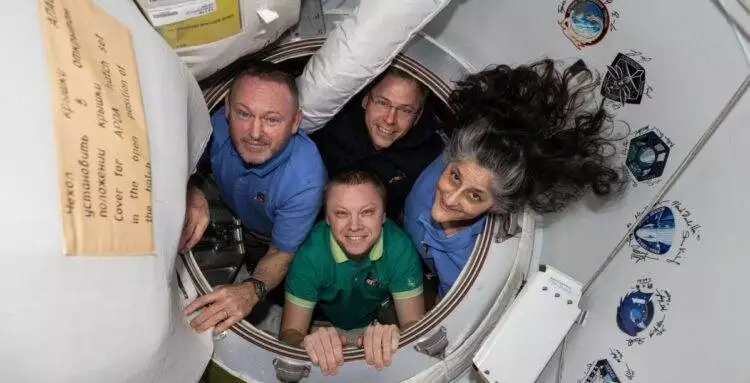Space travel isn’t exactly a walk in the park — especially not for the human body. Sunita ‘Suni’ Williams and Barry ‘Butch’ Wilmore, the NASA astronauts, just got back from spending nine months on the International Space Station (ISS).
Now that they’re back on solid ground, they’re dealing with a whole list of health problems.
Their return to Earth didn’t go as planned
The NASA astronauts were only supposed to be up there for eight days back in June 2024. But their ride home, a Boeing spacecraft, was declared unsafe, so they had no choice but to stick around.
Instead of Boeing, it was SpaceX that ended up bringing them back. Their Dragon spacecraft finally undocked at 1:05 am on March 18 and touched down off the coast of Florida at 5:57 pm.
And just like that, after 286 days, Wilmore and Butch got to feel Earth’s gravity again. Which, as it turns out, isn’t all that great for them.
The brain needs time to adjust to gravity again

Baylor College’s Medicine Center adds: “For their safety, returning astronauts are often placed in a chair immediately upon return to Earth.”
Spending so much time in microgravity messes with the way the brain processes signals. At first, Williams and Wilmore probably dealt with space motion sickness and a total loss of direction. Eventually, they got used to it. Now, they have to get used to Earth all over again — and that’s gonna take time.
A Research in Vestibular Science report breaks it down: “This change in input disrupts orientation, gaze, balance, and locomotion [movement from one place to another], requiring the central nervous system to recalibrate and adapt.”
Bones become fragile and take months to recover
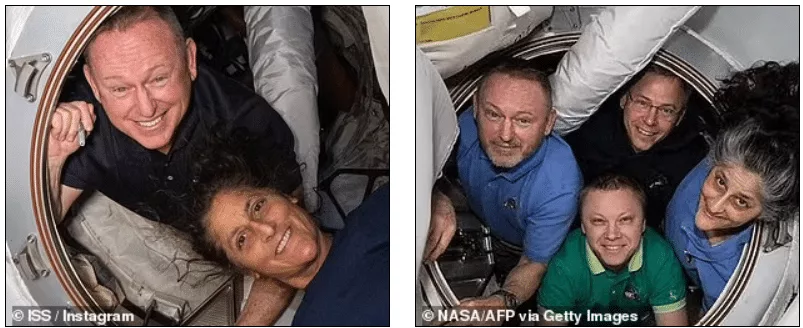
Unusually though, now having landed back on Earth, it’s the astronauts’ ‘non-weight bearing bones’ — like the radius, a forearm bone connected to the wrist joint — which will take longer to recover, remaining ‘below pre-flight levels even six to 12 months after the astronauts return.’
Dr. Tess adds that on the ISS astronauts don’t absorb as much calcium, so have more of it in their urine. This can lead to a heightened risk of kidney stones.
One of the biggest dangers of being in space? Bone loss. The lack of gravity makes bones weaker and more prone to breaking.
Dr. Tess Morris-Paterson, founder of Astro Perform, explained the problem: “The spine and pelvis decrease more than other parts of the body, but the trochanter – a small rounded point the femur near its joint with the hip bone – is the worst affected, decreasing 1.56 percent per month.”
Skin becomes more sensitive and callouses form in unexpected places
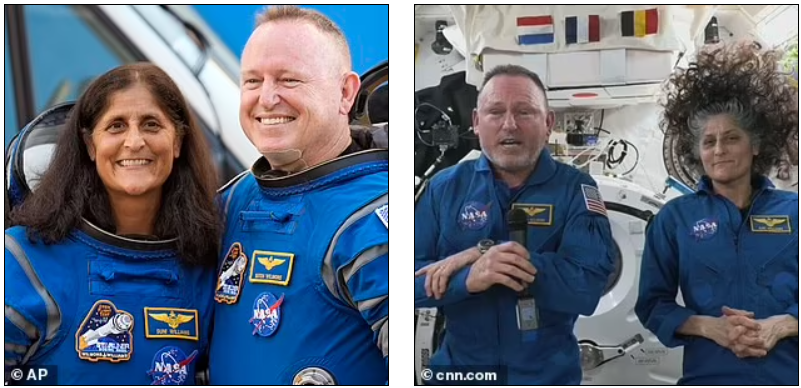
Astronauts’ immune systems take a hit in space, which can make their skin more prone to irritation, according to Baylor College’s Medicine Center.
Plus, being weightless means their feet don’t toughen up like they do on Earth. Instead, the bottoms of their feet get soft, while the tops build callouses from gripping footholds.
Exposure to radiation increases long-term health risks
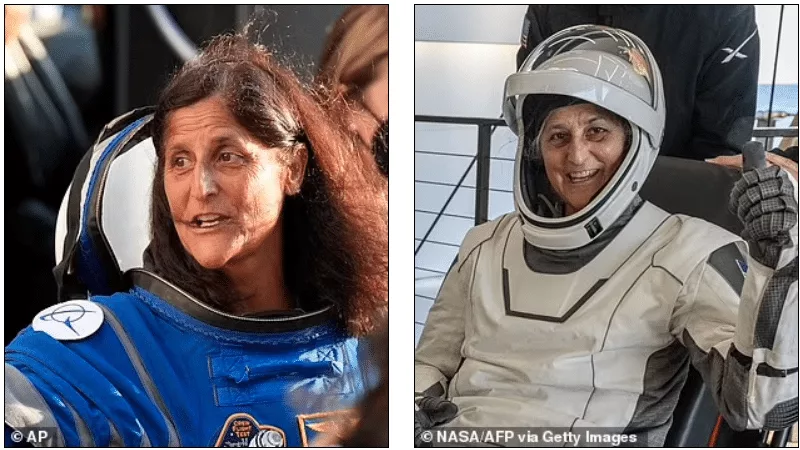
Radiation exposure is a huge issue in space. Astronauts are hit with about 100 times more radiation than people on Earth.
Baylor College of Medicine warns that space radiation can lead to ‘radiation sickness, central nervous system effects, and degenerative diseases.’ It also increases their lifetime risk of cancer.
Muscle mass deteriorates without constant exercise

Even with strict exercise routines and a high-calorie diet, astronauts lose muscle mass. That’s why they look weak and wobbly when they first get back.
Without gravity, muscles don’t have to work as hard, which means they shrink if astronauts don’t stick to a strict workout routine. And if they lose too much muscle, they’re at greater risk of falling or getting injured once they’re back on Earth.
Vision changes due to pressure on the optic nerve
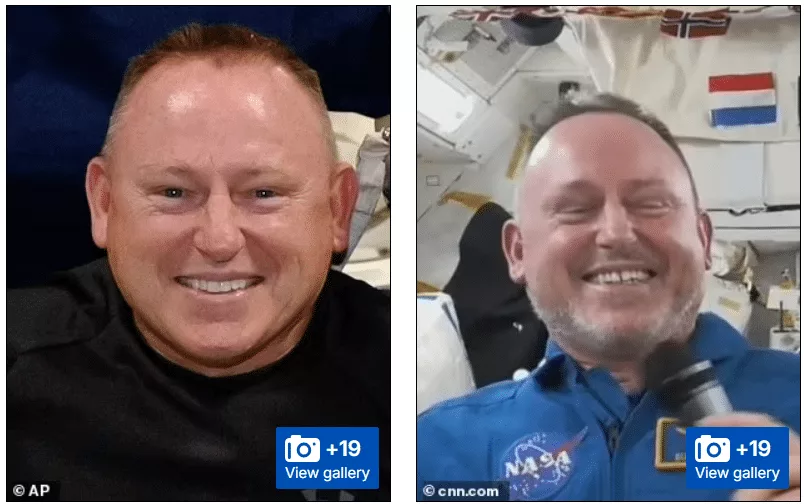
While many astronauts’ eyes return to normal when they come to Earth, NASA says some side effects could be permanent — and depend on how long the team remains in space, which is concerning for the pair given their extended mission.
Spending too much time in space can mess with astronauts’ eyesight. One common issue is swelling at the back of the eye.
Experts say fluid buildup in the skull can put pressure on the eyes and optic nerves, affecting vision.
There’s even a name for it: Spaceflight Associated Neuro-Ocular Syndrome (SANS). It causes swelling in the optic nerve and can make vision blurry.
Mental health is affected by the isolation and vastness of space

Nine months in space isn’t exactly great for mental health.
Williams and Wilmore may be dealing with something called ‘The Overview Effect’ — a shift in perspective astronauts experience when they see Earth from space for the first time.
Ex-NASA astronaut Ron Garan described the feeling after his 178 days in space: looking down at Earth, he had a ‘sobering realization’ of how fragile our planet really is.
Returning astronauts struggle to stand and walk at first
Being in space for that long takes a toll. That’s why, as soon as Williams and Wilmore landed, they were carried off in stretchers. Their bodies just weren’t ready to handle gravity yet.
Retired British astronaut Tim Peake explained: “For me, going into space was no problem at all, but for the first two days on Earth, I felt pretty rough. I think Butch and Suni will be feeling a bit rough right now.
“You know, the whole body is just getting used to gravity. The vestibular system’s a bit messed up. You feel dizzy, a bit nauseous. So, it’ll take them a couple of days to get over that.”
Fluid shifts in the body make astronauts look different
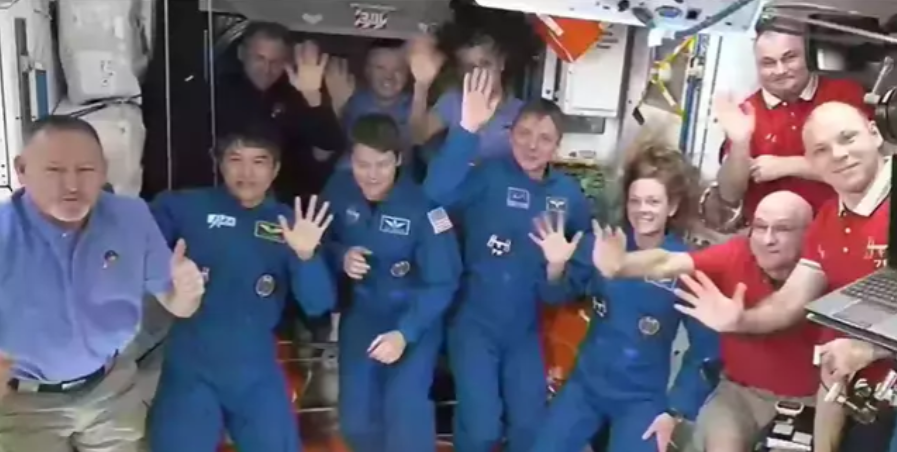
Some people noticed that Williams and Wilmore looked thinner in their post-space photos. That’s because microgravity causes fluid to move differently in the body.
Spaceflight Venous Thrombosis (SVT) is a condition where fluid shifts upward, making the face look swollen or puffy — almost like they’ve been hanging upside down for months.
Recovery takes weeks or months, depending on the astronaut
Fortunately, NASA says most astronauts return to their pre-mission fitness levels after 45 days, though in severe cases, it can take months or even years to recover.
The good news? Most astronauts get back to their pre-flight fitness levels within 45 days. The bad news? For some, recovery can take months or even years.











































